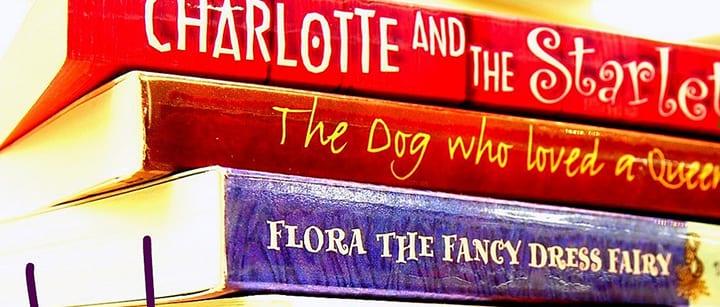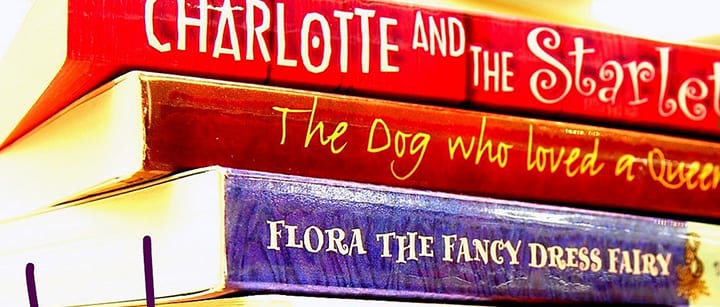Most experts agree: when you’re learning how to write, reading as much as possible should be part of your daily life. And that means reading everything! Here, New Milford, NJ teacher Matthew H. explains what you can even learn from your favorite childhood books…
Sometimes the simplest stories are the best ones. That’s why many of the world’s greatest authors look to children’s literature for inspiration. After all, what could be more pure and innocent than a child’s imagination?
By reading children’s books, we can tap into a part of ourselves that is unencumbered by the cynicism and jadedness that comes with age. We can remember what it was like to be young and carefree, when the world was full of possibilities. In short, children’s books can help us rediscover our sense of wonder.
And isn’t that what good writing is all about?
Let’s take a closer look at how to write children’s books so you can uncover some of this wisdom for yourself!
How Do I Start to Write a Children’s Book?
Writing a children’s book is a wonderful way to share your imagination with young readers. However, it can also be daunting to know where to start. Here are some tips to get you started on your children’s book:
- Know your audience. Are you writing for toddlers, elementary schoolers, or tweens? Each age group has different preferences when it comes to books. Keep your audience in mind as you write, and tailor your story accordingly.
- Keep it simple. Children’s books should have a simple plot that is easy for young readers to follow. Avoid convoluted subplots or dense prose – stick to the essentials.
- Use strong visuals. Children’s books are often judged by their cover, so make sure yours is eye-catching and inviting. In addition, use strong visuals throughout the book to help tell your story. This could include illustrations, photos, or even infographics.
- Make it interactive. Young readers love books that they can interact with, so consider incorporating elements like games, puzzles, or mazes into your story.
- Keep the length in check. Most children’s books are between 20 and 40 pages long – any longer and you risk losing your young reader’s attention. Be concise and focus on quality over quantity.
With these tips in mind, you’ll be well on your way to writing a children’s book that will delight and engage young readers for years to come!
Need help getting started? Sign up for writing lessons! You’ll learn everything you need to know about the basics of writing in general, including general writing tips like what you see in the video below:
https://www.youtube.com/watch?v=mYyBvG3wCpA
What You Can Learn as a Children’s Book Writer
Children’s books are normally our first introduction to reading and writing. As kids, we listen to our parents, teachers, and other caregivers read aloud to us. Eventually, we read basic sentences on our own until we are capable of handling more difficult chapters and so on. But do not brush off children’s books as only suitable for children; even adults can learn how to write by reviewing children’s literature.
Regardless if your goals are academic or creative, adult- or child-oriented, children’s books contain useful tools that can help anyone when learning how to write better. This is due to the fact that children’s literature runs the gamut of more elementary pictorials to chapter books and covers all sorts of genres, as well. As such, a beginning writer can improve his or her structure as well as creative side from children’s books.
Improving Structure
See Spot Run is a common first read for children. While to adults (and even to more advanced children) the repetitive sentences may seem choppy and dull, they contain an essential truth in writing: not every sentence has to be particularly long. This example may be extreme, but good writing should have varied sentence structure, with occasional short sentences to break up longer passages. As boring as reading 20 short sentences in row can be, reading 20 long ones in a row is just as tedious.
Also, if you are able to express an idea with as few words as possible, chances are your audience will have an easier time understanding the principle. On the other end of the spectrum, if you start by writing a more challenging concept (whether fiction or otherwise) in short and simple sentences, you can always elaborate on the idea with more detail once you as the writer have a more concrete understanding of what point you are trying to get across. For example, “Linguistics is the scientific study of language” can become “Linguistics is the scientific study of language, with many subdisciplines concerning language production and use in different contexts.”
Improving Content
Children’s books are often considered to be fluff, but a closer examination of the big names in children’s literature would suggest otherwise: Roald Dahl, Louis Sachar, Judy Blume, J.K. Rowling, etc. Each of these authors is a master at creating their own universes with unique writing styles that can be fantastical, humorous, poignant, suggestive, and so on. The great thing about most children’s authors is that there are no real boundaries in what they choose to discuss. As a result, we can apply the same principle as we’re learning how to write in different styles, being fearless in choosing a topic to write about and committing to it wholeheartedly.
A good writing exercise is to read a children’s book and look for different ways the author expresses different concepts. How does he or she elicit certain emotions? If the theme of the story is more moralistic, how does the author get the reader to learn the lesson without coming across as too preachy? Take notes and consider what you could do differently.
How to Write a Children’s Book and Get it Published
Though you may feel that writing a children’s book is a simple task, the process of getting your book published can be quite difficult. In order to increase your chances of getting your book published, it is important to understand the process and what publishers are looking for.
Children’s Book Ideas
What makes a good children’s book? This is a question that has been debated by authors, illustrators, and publishers for years.
There are many factors to consider, such as the age of the intended audience, the length of the book, and the overall content. But perhaps the most important aspect of a good children’s book is its ability to capture the imaginations of young readers.
A good children’s book should be able to transport its readers to another world, where they can explore new ideas and have adventures. It should be full of color and life, and it should make its readers laugh and cry. Most importantly, a good children’s book should be one that its readers will want to read again and again.
If you’re looking for some ideas for children’s books, here are a few suggestions. For younger children, try a story about a friendly animal. For older kids, go for something with a bit more action, like a mystery or an adventure.
Either way, make sure your book has lots of pictures to keep little ones engaged. And don’t forget the all-important moral of the story!
Whether it’s learning to be kind to others or never giving up on yourself, kids love hearing about how they can make the world a better place. So get writing – your next bestselling children’s book could be just around the corner.
Children’s Book Writing Styles
There are many different styles that children’s book writers use. Some writers use rhyme, while others use simple prose. Some write stories that teach a moral lesson, while others focus on entertaining their young readers. No matter what style a writer chooses, the goal is always the same: to create a book that captivates and engages its young audience.
One of the most popular styles of children’s writing is rhyme. Rhyming books often have a sing-song quality that kids enjoy, and the rhythmic nature of the words can make them easy to remember. Dr. Seuss is one of the most famous examples of a rhyming children’s author, but there are many other great writers who use this style effectively.
Another popular style of children’s writing is simple prose. Prose books tend to be shorter and easier to read than books that rhyme, making them ideal for younger readers. Many classic children’s stories are written in prose, including “The Very Hungry Caterpillar” and “The Cat in the Hat.” Prose can also be used effectively to tell more complex stories, as J.K. Rowling proved with her Harry Potter series.
Some children’s authors write stories with a moral lesson at their core. These books often teach kids about important life lessons, such as sharing or being kind to others. Aesop’s Fables are some of the most famous examples of this type of story, but there are many other great authors who write morality tales for kids.
Finally, some authors focus on simply entertaining their young readers. These books often feature wild adventures or hilarious characters, and they are designed to keep kids entertained from beginning to end. “The Hobbit” and “Charlie and the Chocolate Factory” are two examples of endlessly entertaining children’s stories.
No matter what style a writer chooses, the goal is always the same: to create a book that captivates and engages its young audience. By finding the style that works best for them, children’s authors can produce stories that will be loved by kids for generations to come.
How to Write a Children’s Picture Book
Writing a children’s picture book is both a challenging and rewarding endeavor. While the process may seem daunting at first, there are a few simple steps that can help to make the process a bit easier.
First, it is important to come up with a good story idea. Not only should the story be engaging, but it should also be appropriate for the target age group.
Once you have a good story idea, the next step is to begin brainstorming illustrations. It is important to keep in mind that the illustrations should complement the story, and not overpower it.
Once the story and illustrations are complete, the next step is to find a publisher. This can be done by submitting your manuscript to various publishing houses or by finding an agent who will help to place your book with a publisher.
Writing a children’s picture book is a lot of work, but it can be a very rewarding experience.
How Much Does it Cost to Publish a Children’s Book?
There is no one-size-fits-all answer to this question, as the cost of publishing a children’s book can vary widely depending on a number of factors.
For example, self-publishing is typically much less expensive than traditional publishing, but it also requires a greater investment of time and effort. In addition, the cost of printing and distribution will vary depending on the book’s length and format, as well as the printer and distributor you choose.
However, there are some general guidelines you can follow to get an idea of how much it will cost to publish a children’s book. For instance, most self-published authors spend between $500 and $5,000 to produce their book, while traditional publishers typically have budgets in the range of $10,000 to $100,000.
Of course, it is also important to consider the potential return on investment when making your decision. A successful children’s book can generate royalties that significantly offset the initial cost of publication, so it is important to factor this into your decision as well.
How Much Money Can You Make Writing a Children’s Book?
So, how much money can you realistically expect to make from writing a children’s book? It depends on a number of factors, such as the length of the book, the publisher, and whether or not it is part of a series.
Generally speaking, an author can expect to make between $1,000 and $10,000 per book. While this may seem like a relatively small amount of money, it can add up over time, especially if an author has multiple books published.
In addition, many authors find that the satisfaction of seeing their work in print is worth more than any monetary compensation.
Write a Children’s Book and Learn More About Yourself as a Writer
The next time you’re feeling stuck creatively, consider picking up a children’s book for inspiration. These simple stories can teach us a lot about what it means to be a great writer—things like honesty, bravery, and kindness. So don’t be afraid to let your inner child loose every once in awhile; you might just be surprised at what you discover.
Looking at children’s books, we can come to terms with unique writing styles, whether highly descriptive or more direct in structure. We can learn from them and apply that to whatever writing we have in front of us. So don’t be shy, pick up a children’s book today and you might be surprised at what you can learn about writing!
 Matthew H. teaches a variety of subjects both online and in New Milford, NJ. He recently received his MA from NYU with a background in Sociolinguistics and related research. Learn more about Matthew here!
Matthew H. teaches a variety of subjects both online and in New Milford, NJ. He recently received his MA from NYU with a background in Sociolinguistics and related research. Learn more about Matthew here!
 Photo by hunting.glee
Photo by hunting.glee
Suzy S.

